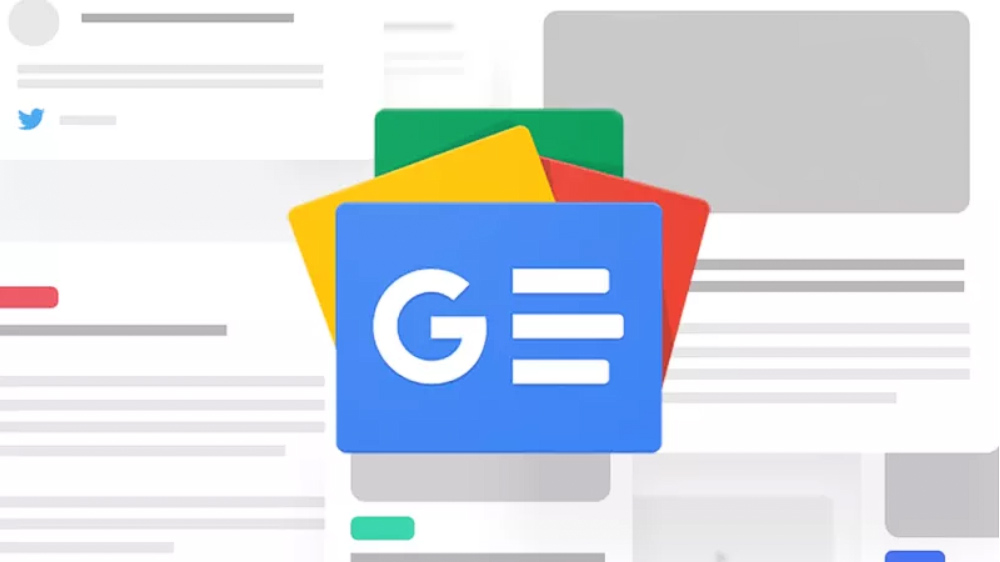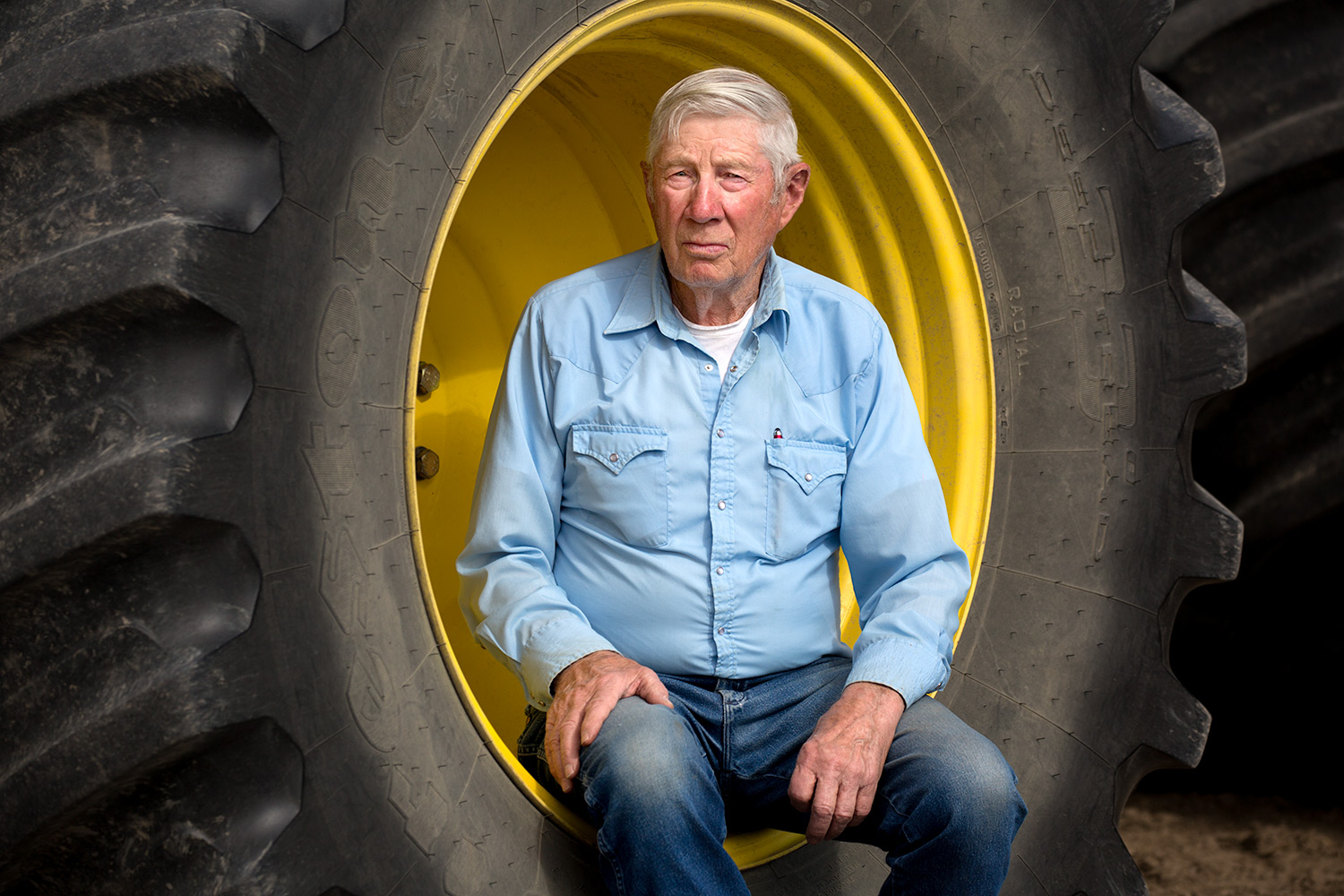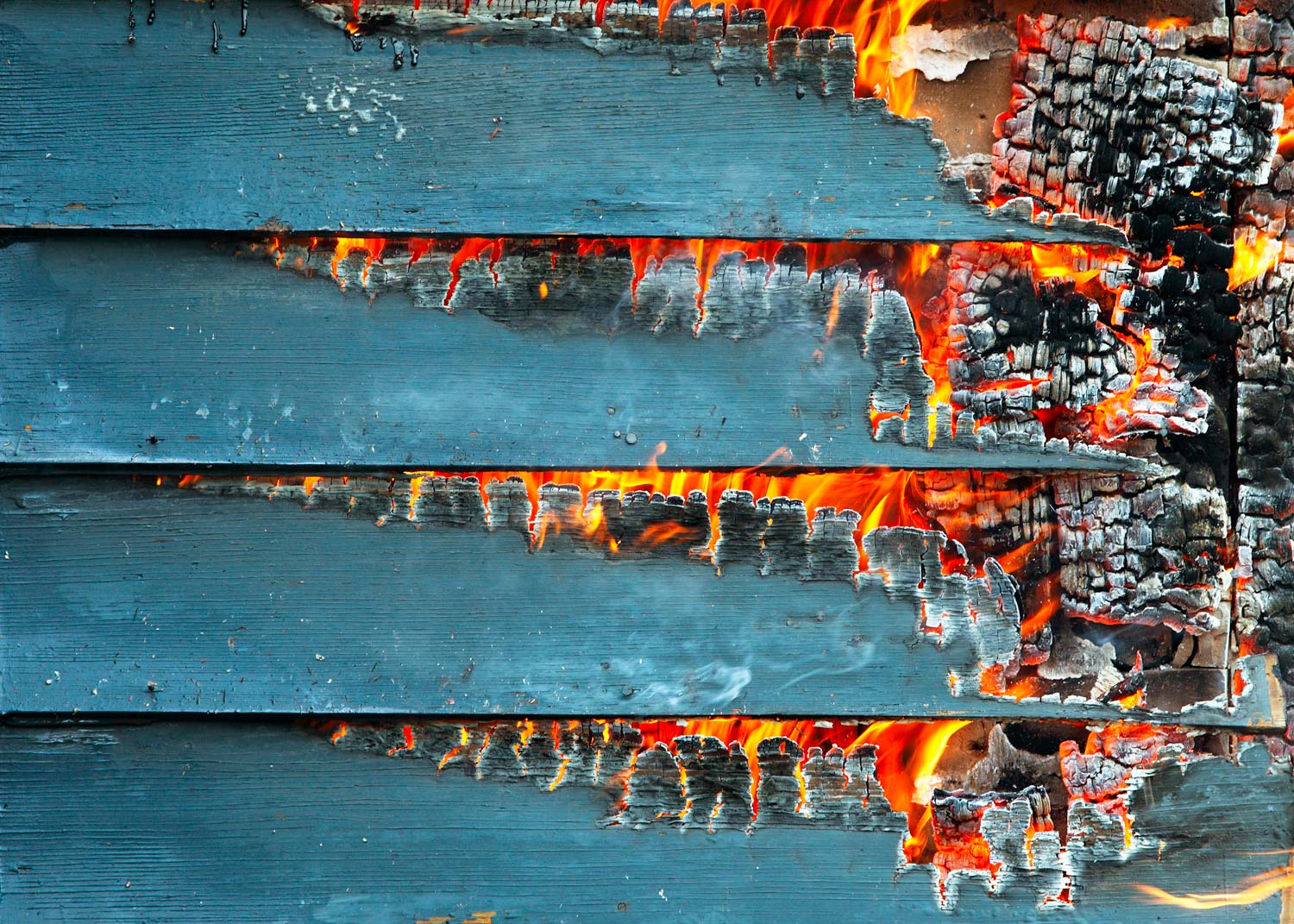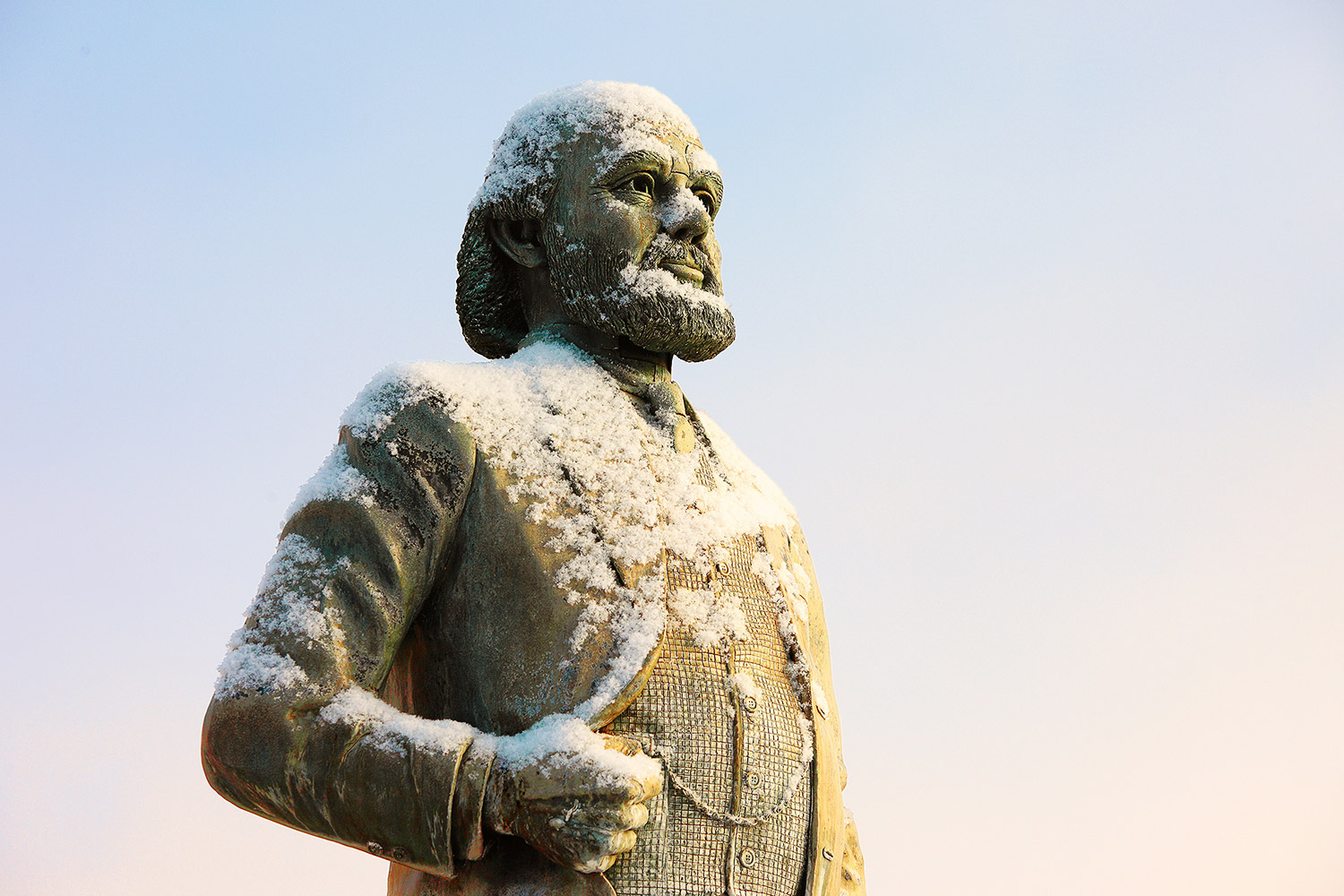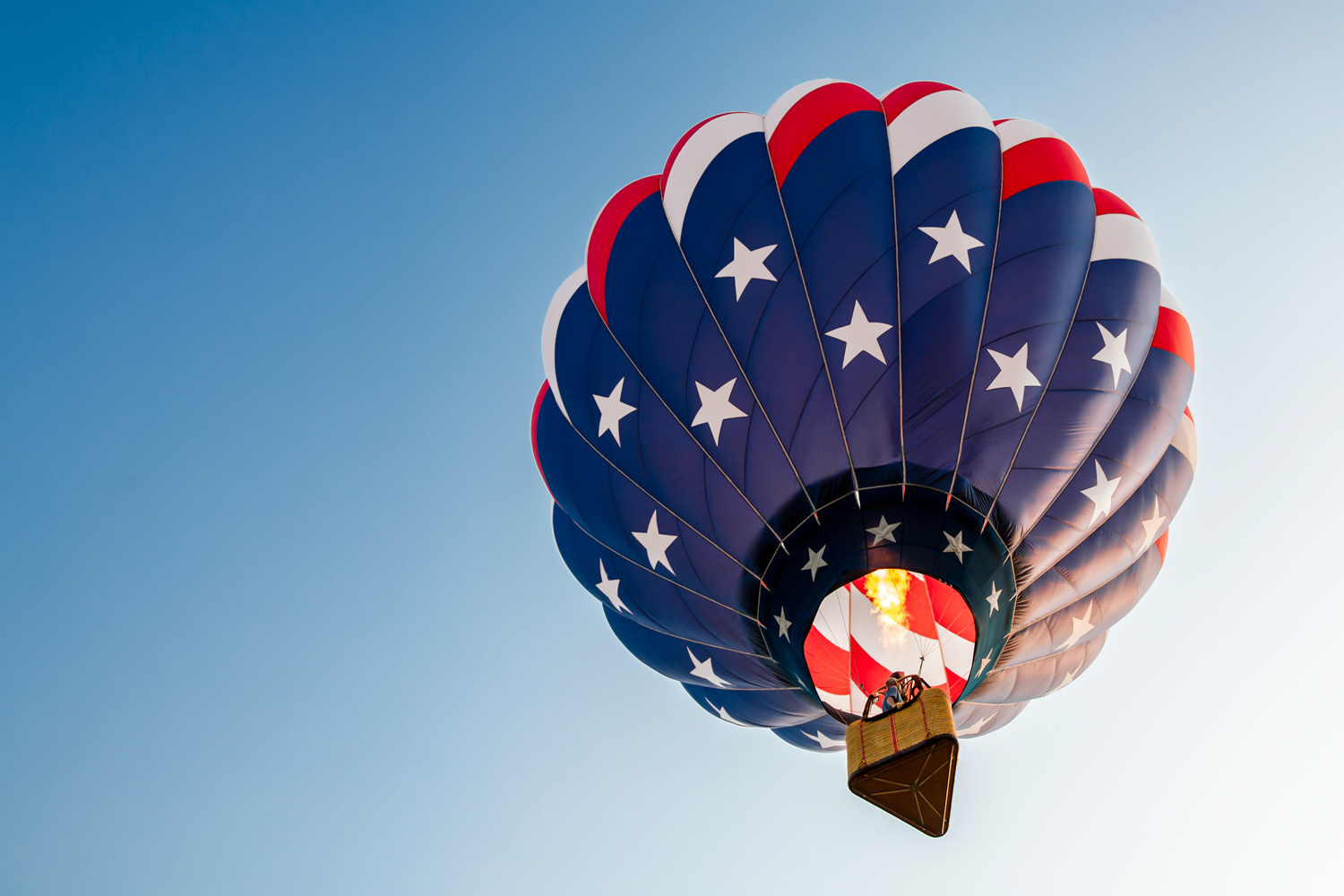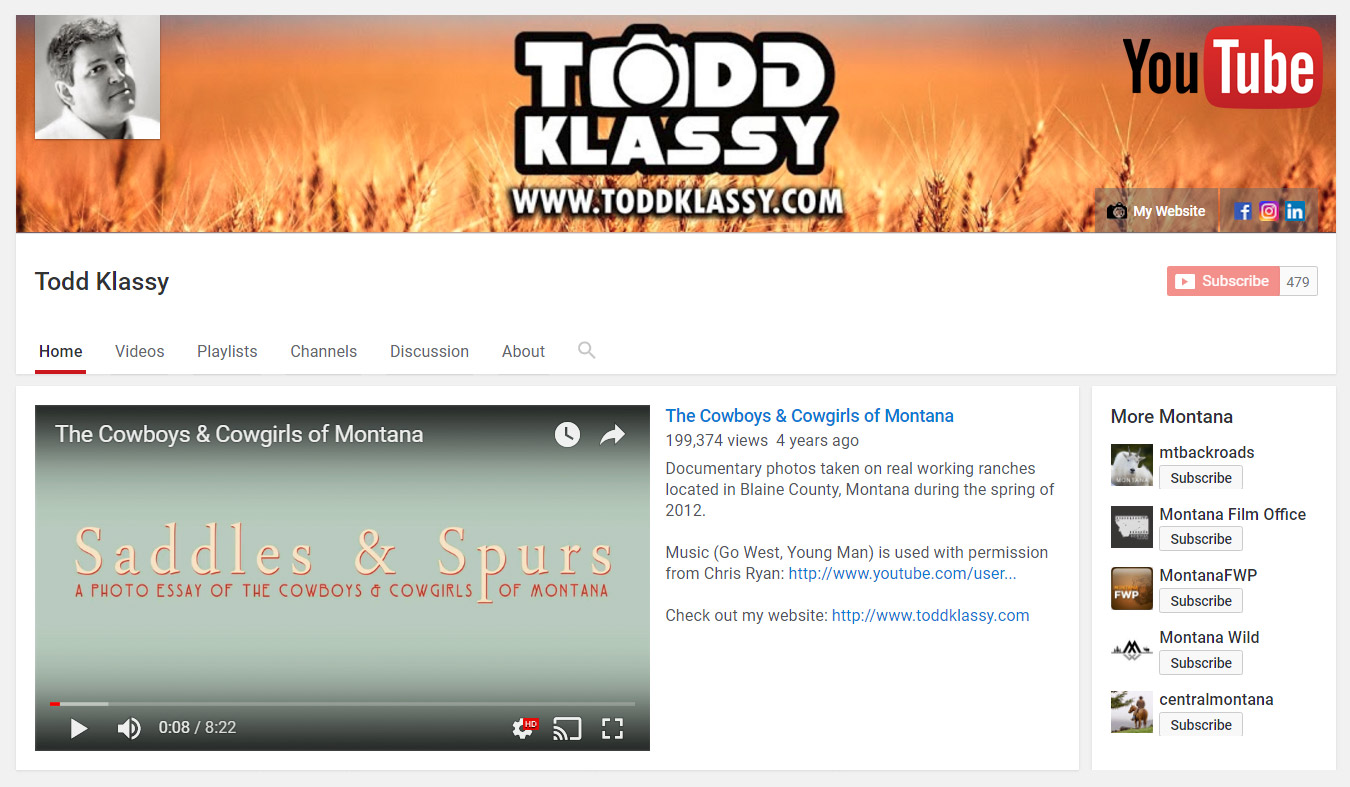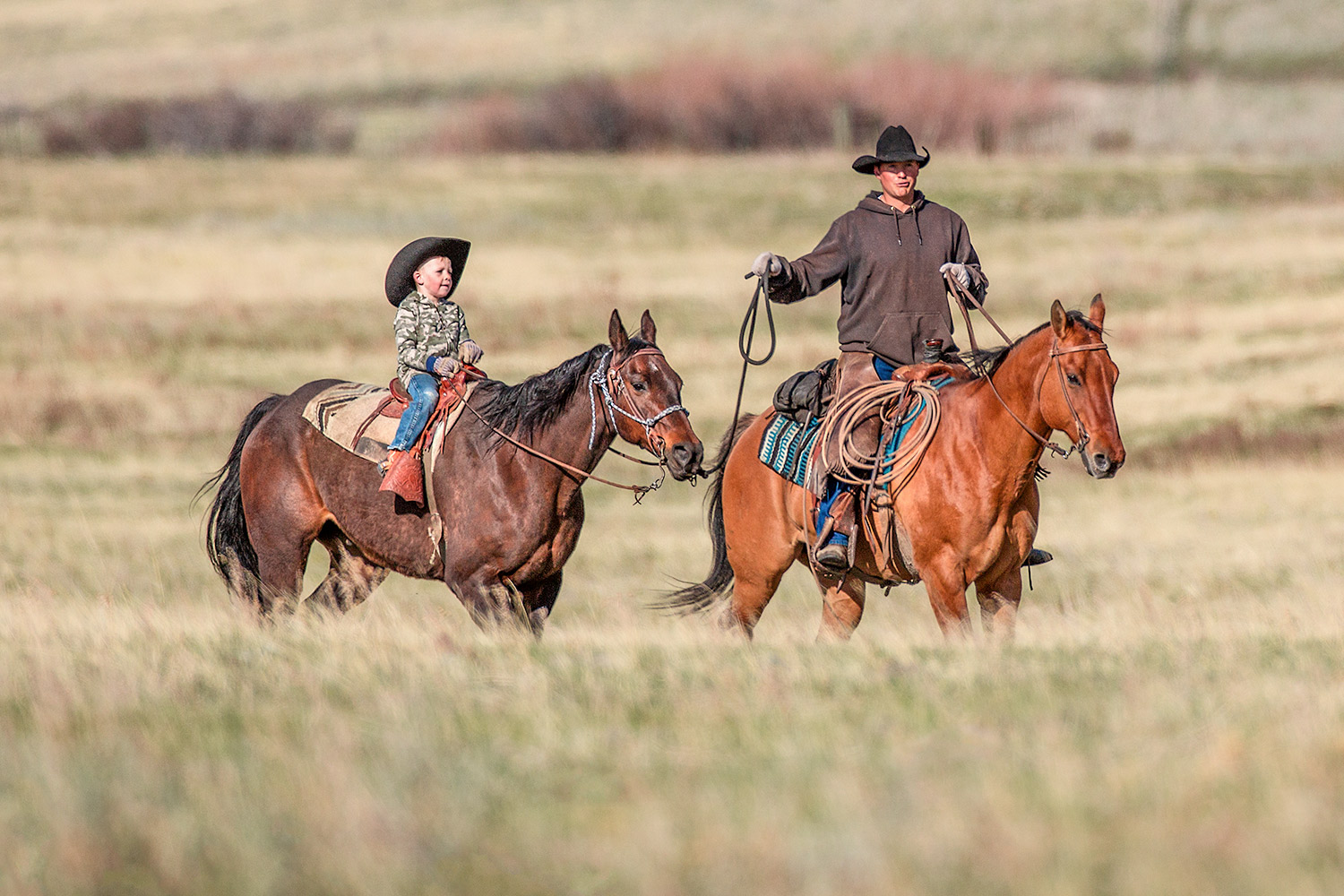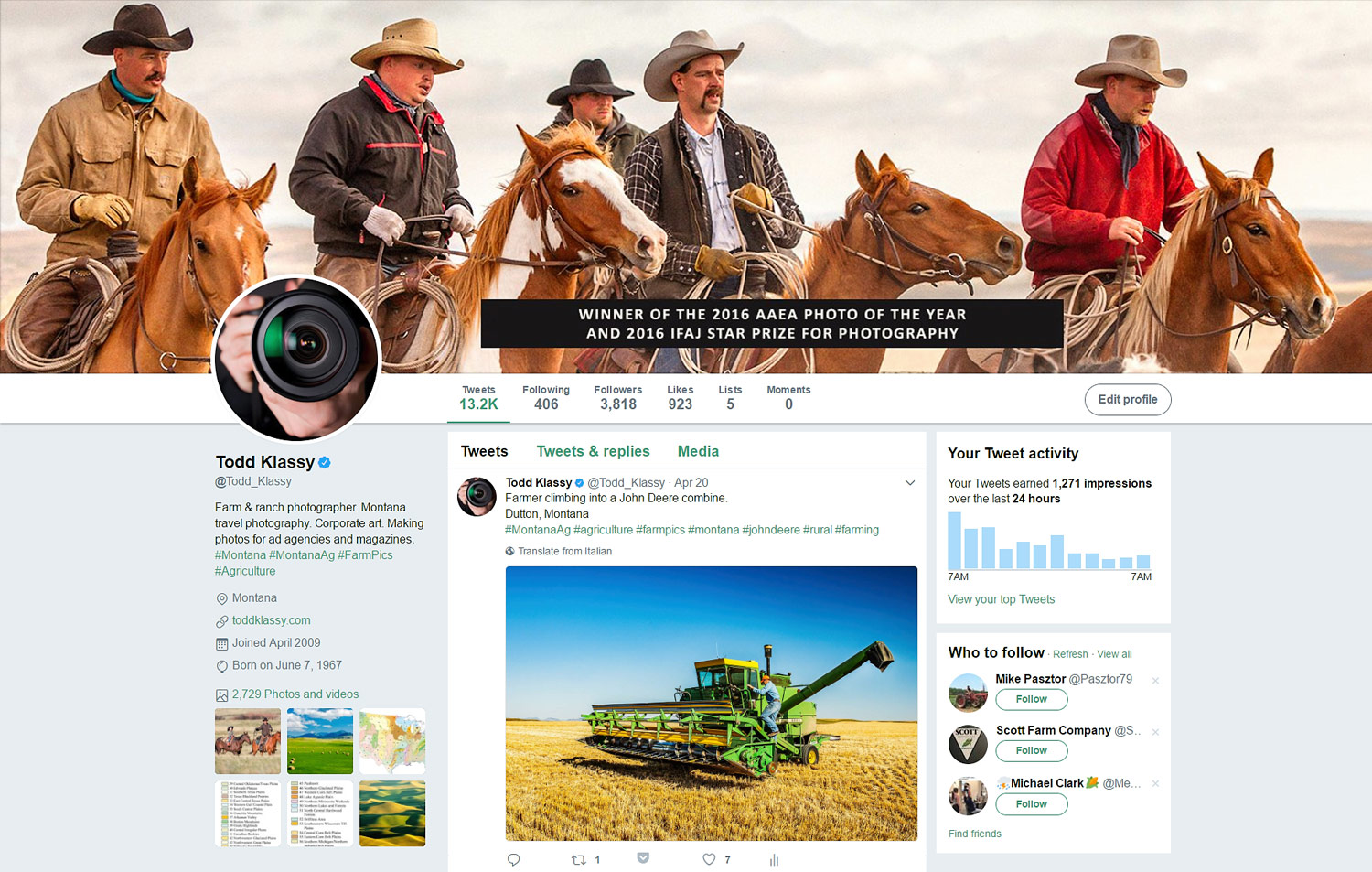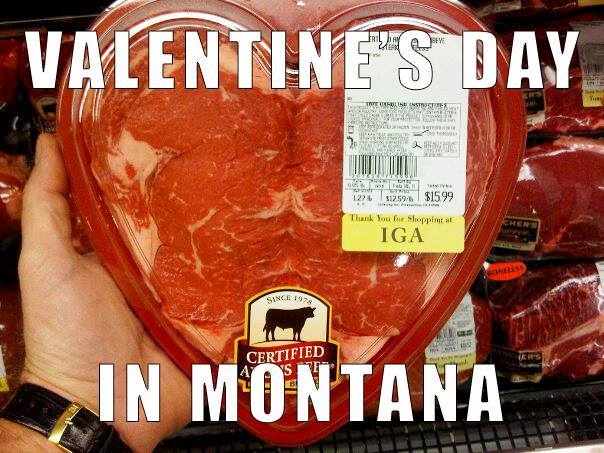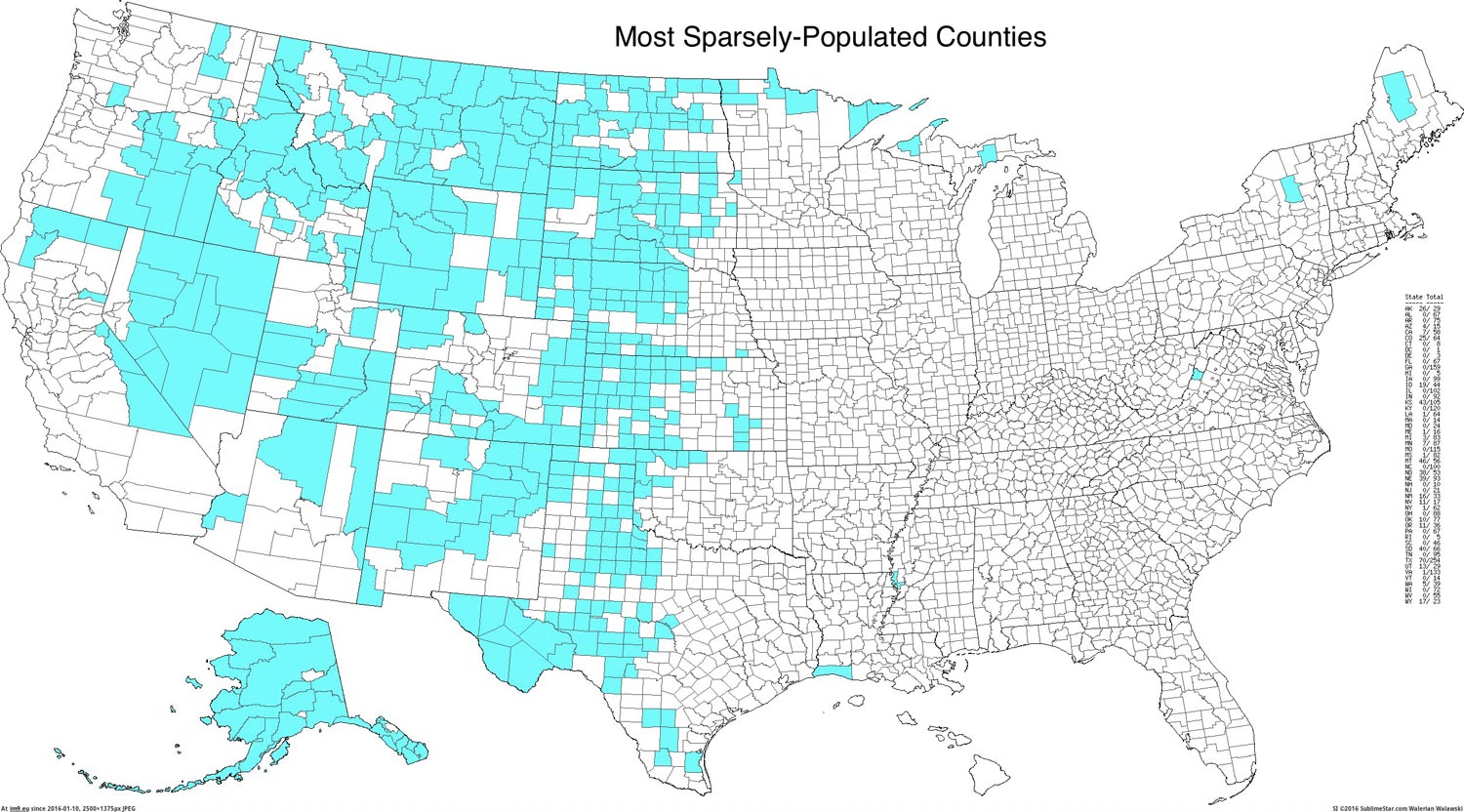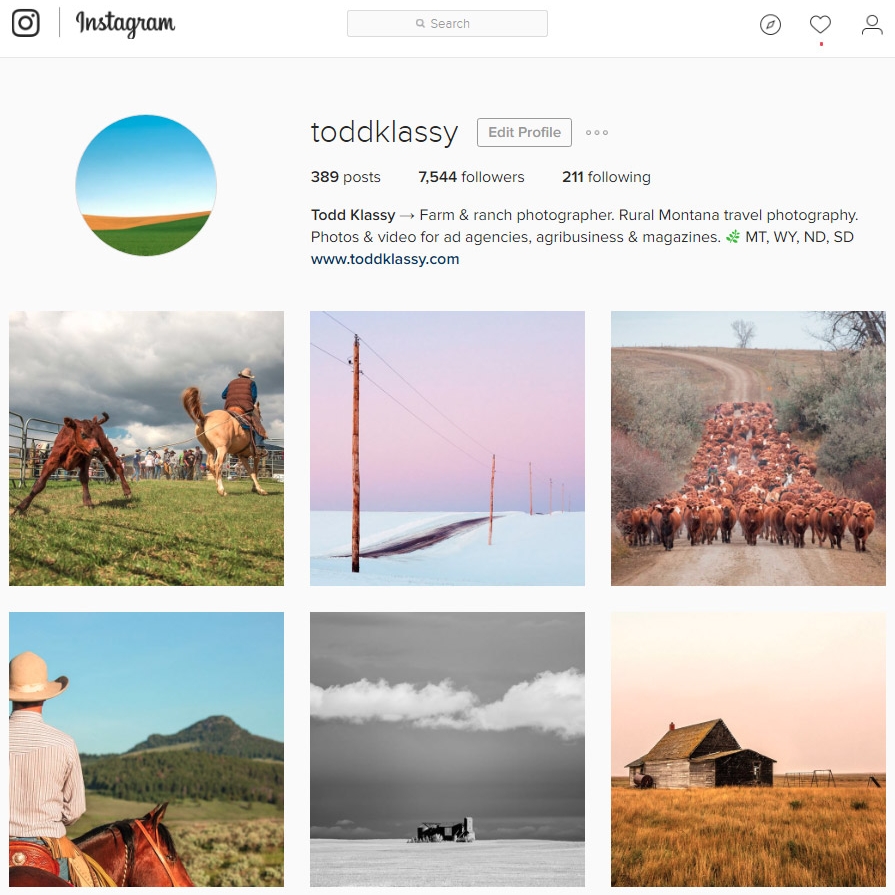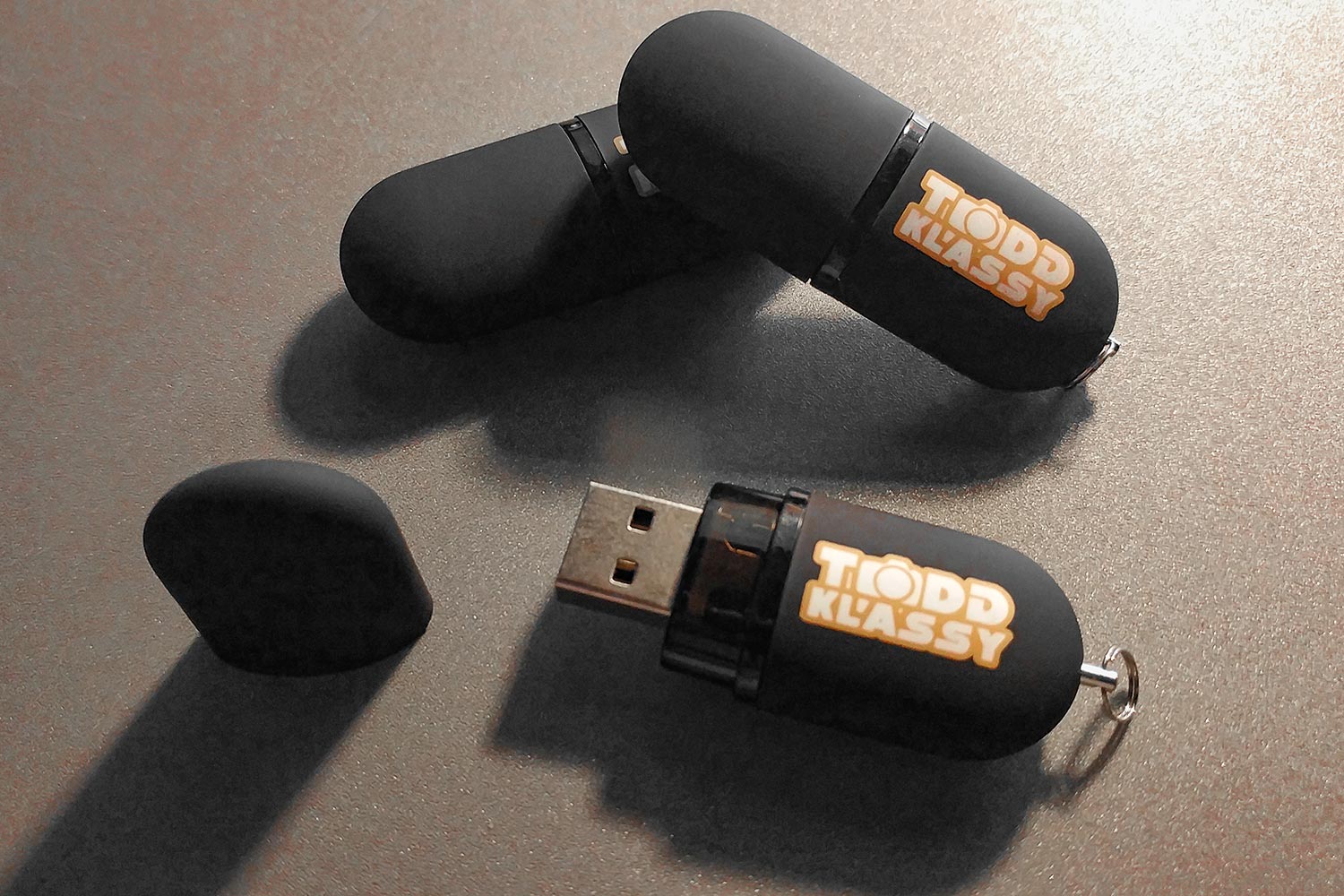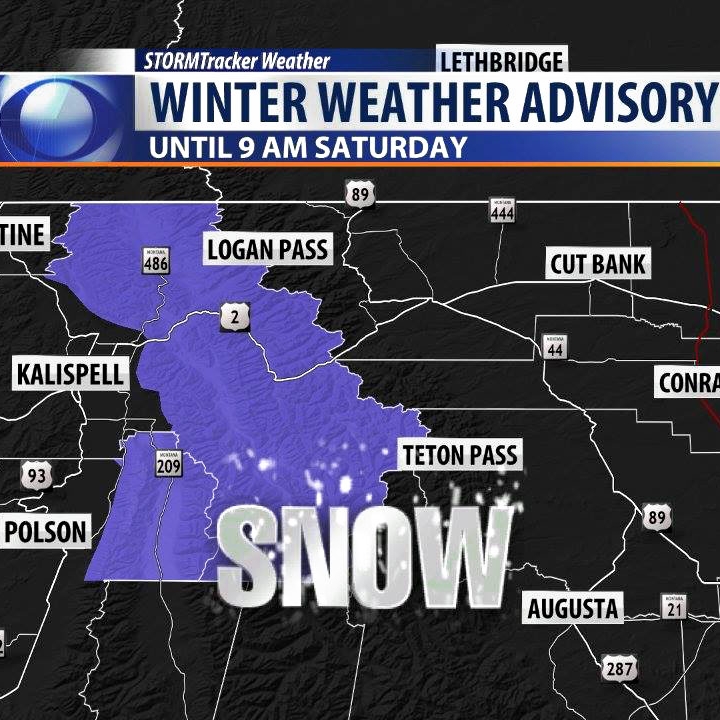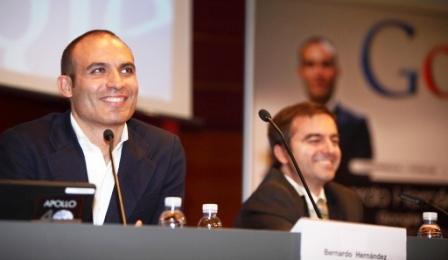Last week I angrily wrote about the scheme used by the Montana Office of Tourism and its ad agency MercuryCSC to take advantage of amateur photographers by not paying them for using their images in a new billboard campaign. I also wrote about how I considered amateur photography a poor way to market our beautiful state.
Well, since then I've had some time to reflect on what I wrote. Hindsight, they say, has 20/20 vision. So I wanted to say I am sorry. After chewing on the cud a little, well...I don’t think my message was strong enough. I probably should have been more forceful; more opinionated. That said, I see no sense in dragging MercuryCSC through the mud again this week, so we might as well move on.
The western view of the Bear Paw Mountains near Havre, Montana. → Buy a Print
This week I promised to share with you−MercuryCSC’s competitors, and the few (the proud) open-minded Montana Office of Tourism employees−my thoughts about how the great state of Montana should market itself. Instead of using unpaid amateur photographers, who don't even live here, to pitch the state with grainy images of the state.
My thoughts here are not something that I have hastily thrown together. They embody a great deal of research and readings over the past four years. And while my plan may not be perfect, I think it sure beats images created by amateurs so MercuryCSC can profit more from its cut of the state's $12.4 million budget to promote Montana under the guise that everyone using social media will be impressed if they see an iPhone photo made by Joe in Des Moines. This notion only proves that the Montana Office of Tourism and MercuryCSC could not misunderstand social media the market any more.
Media is changing. And Montana, like the rest of the organizations competing for the attention and dollars of consumers must change with the times. Take one look at Montana’s official travel website. I’m sure it was a beautiful and effective design when it was first launched, but now it is bland. It is boring. It is uninviting. And it is not a destination. Everything Montana is not.
I think the people in charge of marketing Montana think we are competing with Idaho, and California, and Oregon, and Wyoming. And while I suppose in a sense we are, that’s not where the real competition for the attention of visitors to the state is coming from. No, Montana is in a very real war with the likes of Facebook, and Twitter, and YouTube, and Netflix, and video games like Grand Theft Auto and Call of Duty. Just because you share a few amateur photographs on Facebook and Twitter from someone who visited the state in 2007 does not mean you are raising the brand that is Montana above the littered clutter of the Internet.
I think I know what the Montana Office of Tourism and MercuryCSC were thinking when they decided to eschew professional photography and use visuals from amateur photographers instead.
One day back in 2008 someone at MercuryCSC was eating lunch in the break room when they opened a trade journal to an article about the glory of “native ad content” and “native advertising.” Today these are buzz words in the advertising agency. They were supposed to be the new winning formula to pitch brands. And like every team in the NFL that quickly mimics what the Super Bowl winner did to capture the league title, ad agencies all across the world quickly began mimicking what it considered to be successful advertising technique. The problem is, when every ad agency does the same thing, their message gets lost in the clutter. And they lose.
Montana cowgirls leading their horses off to the barn. → Buy a Print
Native advertising is a trend where brands (in this case the state of Montana) want their message covertly delivered to potential customers in a way that adds or enriches their experience. An example of this is when advertisers pay bloggers to write about how awesome their product is. Or luring amateur photographers to submit (and as an adjunct−also license) their photos to the state of Montana so they may re-Tweet them, share them on Facebook, post them on Tumblr, use them on their website, publish them on a billboard, place them in promotional material, etc. The problem is (1) they are taking advantage of amateur photographers by not paying them to use their work, which is wrong, and (2) the visuals are not very compelling, even if the story behind the image might be. And therein is the real problem.
On a typical written article on the web (such as this one) two-thirds of people exhibit more than 15 seconds of engagement. Which means for every nine people who began reading this article, I have already lost three of you (and half of the remaining six are probably employees of MercuryCSC). If, however, that article includes native ad content that number plummets to around one-third. Consumers have learned to spot native advertising and they consider it unsavory and disingenuous. In other words, if professionally produced visuals are the Christmas tree you chopped down in the woods, then native advertising produced by amateurs is the cheap, plastic, artificial alternative sold at Walmart. Simply put, native advertising has an attention deficit disorder.
So what does Montana do?
America keeps getting fatter. We are glued to our TVs, smart phones, and computer monitors. But a general guilt is beginning to set in. Montana, after all, is the least obese state. Why is that? Because we have adventure all around us. Americans know their pants keep getting larger, but they can’t peel themselves away from the false adventure and experience they get from their game console and/or YouTube where they live vicariously through some moron doing something stupid just for the sake of earning additional “likes” and “faves.” These false adventures produced on the Internet and game consoles are the media equivalent of fast food. The more people consume it, the fatter they become. And the fatter they become, they more they tend to rely on it.
Montana’s tourism industry needs tools and a message that breaks that cycle. And I think it is easier than some might think.
You don’t win the hearts and minds of consumers by showing them a poorly developed photo and out-of-focus cliché. You need to hit them over the head. You need to overwhelm their senses with the real beauty and adventure that awaits them in Montana. Let’s not show them same angles and views of Goose Island at Glacier National Park and Grand Prismatic Spring in Yellowstone that they've seen over and over again photographed by a million other tourists have captured the same scene before. No, let’s change their perspective. Literally AND figuratively.
So how do we do that?
For starters, let’s first consider the two things have changed in the past four years. One…video has quickly surpassed every other single medium on the Internet. It is more popular than email, blogs, music, games, and yes, even photos. Two…web design is just now beginning to evolve into something truly beautiful and magnificent. We are at the bleeding edge of some truly amazing changes with how the world will use the web.
Please take a moment to visit the following websites and you will see (and experience) what I’m talking about:
The New York Times story Snow Fall was considered a breakthrough in interactive, multimedia rich web design.
- All This Light
- Hollywood Reporter
- New York Times | South China Sea
- New York Times | Snow Fall
- The Telegraph
- Washington Post
- Whale Wars
Did you visit each of those websites? What did you think?
Now take a moment to watch this video; a story on CBS’s 60 Minutes about the evolution and power of the tiny GoPro camera:
http://www.cbsnews.com/videos/gopros-video-revolution/
Are you picking up what I’m throwing down?
Montana’s web presence is outdated. It was probably an awesome and trend setting design back in 2009 or 2010, but it now lacks substance. That was four years ago. Montana’s travel web sites are no longer a destination; they are more akin to an advertisement in the Yellow Pages. And they don’t engage visitors. They are merely a place to find information once someone has already decided to visit Montana. The Montana travel websites need to be more than that. They need to engage those who are still thinking about their vacation. They need to serve as an alternative to Facebook and show Montana has much more to offer than a quick virtual drive through the video game Grand Theft Auto.
The tiny little GoPro camera captures high-definition video on the cheap. It is used by all television networks and it fits in the palm of a hand. It was made to capture Montana.
I can’t stress this enough. Montana’s web presence needs to hit people over the head. Help people understand that they are wasting their lives by NOT visiting Montana.
Because they are.
A dynamic, active, multimedia rich website using some of the same elements exhibited in the links above, combined with rich, multimedia content designed to be naturally shared by others on the Internet via social media, can and WILL accomplish that.
Montana needs to ENGAGE people on the Internet. Like I said, their website needs to be a destination, just like Montana itself is a destination. Just because you are Facebook or Twitter does not mean you are hip. And it does not mean you are actively engaging customers. Tell those sitting at home doing nothing to DO SOMETHING. ANYTHING. And show them how. Instead of telling them to GET LOST, tell them “Get off your ass and EXPERIENCE REAL ADVENTURE. Experience Montana.”
God MADE Montana to titillate the senses. It NEEDS compelling visuals. And the GoPro camera was MADE for a place like Montana. Strap it onto a whitewater rafter in Glacier National Park. Strap it to the chest of a bull rider at the rodeo in Belt. Strap it onto someone climbing rocks at Lost Lake. Strap onto the end of the fishing line as someone casts it into the river near Craig. Make them FEEL like they are there. Make them wish they were there. And make them miss it when then turn off their computer or smartphone for the night.
Let’s change everyone’s PERSPECTIVE of Montana.
Literally AND figuratively.
And let’s make the website work real time. It should be dynamic, not static. That means at least three to four impactful, multimedia-rich features every week, not one a month. Issue a request for an enterprise quote from photographers (who also know video) in each of Montana’s travel and tourism zones; Missouri River, Central Montana, Custer Country, Yellowstone Country, Gold West, Custer Country, and Glacier Country. Buy up 20 to 30% of their time and business for the calendar year…hire them to produce a constant stream of photos, video, high definition audio, and written articles. Create regular blog-like features rich with text, and photos, and high definition video, and high definitioin audio, and infographics, and information about compelling people, places, and things. Make these visual artists cover every festival and event. Make them capture every state park and every beautiful landscape. Introduce the people outside of Montana to the women who bake cinnamon buns every week at the senior center in Chinook. Or give them a glimpse of Piano Pat at the Sip n’ Dip Mermaid Bar in Great Falls. Or the brewmaster at Big Sky Brewing. Make their mouths water as you introduce them to the fine cuisine at restaurants in Missoula, Bozeman, Whitefish, and elsewhere. Multimedia and powerful visuals have the ability to do that.
Amateur photography cannot.
Native American Indian dancer at the Rocky Boy Powwow. → Buy a Print
If a cold, antiquated company such as Amtrak can find a way to develop a residency program for writers to help promote its train routes, then a state such as Montana with a $12.4 million budget can find a way to knock people over the head with amazing multimedia. We should be creating our own residency program. Putting visual artists on the road to cover the state and show it in unique and compelling ways.
We also need a more dynamic way to market the state on smart phones. More than ever people are using their smart phones to gather information online. On average, 65% of the traffic to my own website is from mobile devices. The state of Montana’s websites must experience something similar. And the goal is to PUSH information, not make visitors PULL. How about making an app that allows a visitor to Montana to be notified when they are approaching special while driving down the road? A virtual tour guide working with the GPS built into your phone. As you drive down the road your app wakes up and says:
“On your right, in one minute, you will pass the spot where the outlaw Kid Curry and his partners Butch Cassidey, the Sundance Kid, and Deaf Charlies blew up a train on the Great Northern Railway. Press 1 for more details.”
“In 30 minutes you will arrive in Great Falls. Would you like to make reservations for dinner?”
“You are now entering Fort Peck, Montana. Tonight the Fort Peck Theater is featuring the musical "The Music Man" at 7 PM. For tickets please press 1.”
I mean come on people, this isn’t that hard.
I suppose I have rambled on long enough. It is difficult to put a comprehensive plan into an easily digestible form. There’s much more to it. This is just a glimpse. I am, after all, only an amateur ad man. And like an amateur photographer working for MercuryCSC on its new billboard campaign I won’t be paid. All I want is credit. Hopefully one of their competitors will pick up my ideas and do a better job convincing the state that something akin to this makes much more sense than the nonsense they are currently engaged in. Then maybe, just maybe, MercuryCSC will then know what it is like to lose business to an unpaid amateur.

